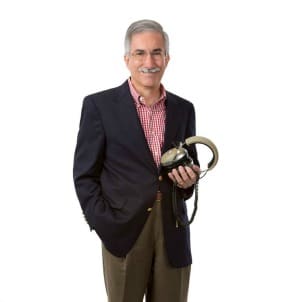
I was hoping to await the release of the FCC’s coming AM Notice of Proposed Rule Making before commenting upon the proposals. The scathing commentary by WLW’s Darryl Parks criticizing the NPRM before it is even released by the FCC, however, merits a response. Mr. Parks’ recent blog on AM can be summarized as concluding that everything the FCC is about to do in the AM NPRM will either increase interference, or is unaffordable. This conclusion demonstrates a lack of understanding by Mr. Parks about both AM radio and the FCC’s upcoming AM revitalization proposals.
There is no denying that many of AM’s woes can be ascribed to interference. But Mr. Parks focuses only on interference from other stations. If interference from other stations was AM’s only challenge, remedies would be easier. Also, while FM translators and AM technical changes will each cost something for an AM station, the plethora of AM stations now enhancing service to their communities with FM translators indicates that many AM station licensees are willing to expend funds for such improvements.
Mr. Parks’ AM commentary has been removed from the WLW website (READ A PDF OF THE BLOG HERE). But as wrong as Mr. Parks may be in his AM observations, his misconceptions and hyperbole serve as a guide to comment upon the FCC’s upcoming NPRM.
FCC Chairwoman Clyburn stated at the NAB Radio Show that the Commission in its upcoming NPRM will be proposing one service enhancement and five technical changes to its AM rules.
The service enhancement is to allow AM broadcasters that are able to locate FM spectrum for FM translators to apply for a new FM translator in an AM-licensee-only FM translator window. While such a filing window will undoubtedly eventually yield an FM translator for some AM broadcasters, the initiation of service from those FM translators is likely to be two or more years away. The previous FM translator window took more than 10 years for many applications to be processed, and if anyone thinks that filing window was an anomaly, I note that there are still AM applications pending from the 2004 AM window.
I would hope that the FCC could fashion a way for AM broadcasters to acquire FM translators that is not years or a decade or more away. The only thing that keeps many existing FM translators from now being moved to serve AM stations are somewhat arbitrary procedural rules which may serve bureaucratic desires but have little apparent public interest justification. So far, however, with FM translators for AM stations, the FCC has not seen fit to do what produces results which would be allowing FM translators to move greater distances to serve AM stations.
The five technical changes to AM rules will each benefit some AM stations. Mr. Parks’ conclusion that interference will be increased from the proposed technical rules, however, is simply wrong. Altering AM daytime and nighttime community coverage standards only impacts reception within the station’s community of license which is a public interest determination rather than an interference concern. The AM ratchet rule requires a power reduction in any transmitter site move and had laudable goals when adopted, but it is now difficult to point to any substantive results from the rule other than AM stations operating with less coverage. Modulation Dependent Carrier Level control technologies allowing broadcasters to reduce power consumption by notification, rather than seeking a waiver or experimental authorization, may impact the technical quality of AM reception but Mr. Parks does not explain how such a technical change might increase interference. Finally, allowing for shorter AM towers may likewise impact AM reception but the decrease rather than an increase in signal radiated does not increase interference.
Missing in the FCC’s description of its proposed NPRM is all-digital AM broadcasting. The tests on an all-digital AM signal are promising even as it is widely concluded that hybrid AM HD digital transmissions are a non-starter. Once there are significant numbers of AM HD receivers in a market, or if an AM broadcaster desires to serve a discrete demographic or interest group with specialized programming, all digital AM HD has a significant long-term potential for AM revitalization.
The one criticism that can be fairly leveled at the FCC is that the agency is moving at a 20th century pace in our 21st century. The FCC still thinks nothing of rule making proceedings that may take years for potential improvements to the AM broadcasting service while changes in the audio marketplace are taking place in time periods measured in months. If the FCC truly has a desire to revitalize AM, it needs to move at a much faster pace than an NPRM that will take years for resolution and results.







